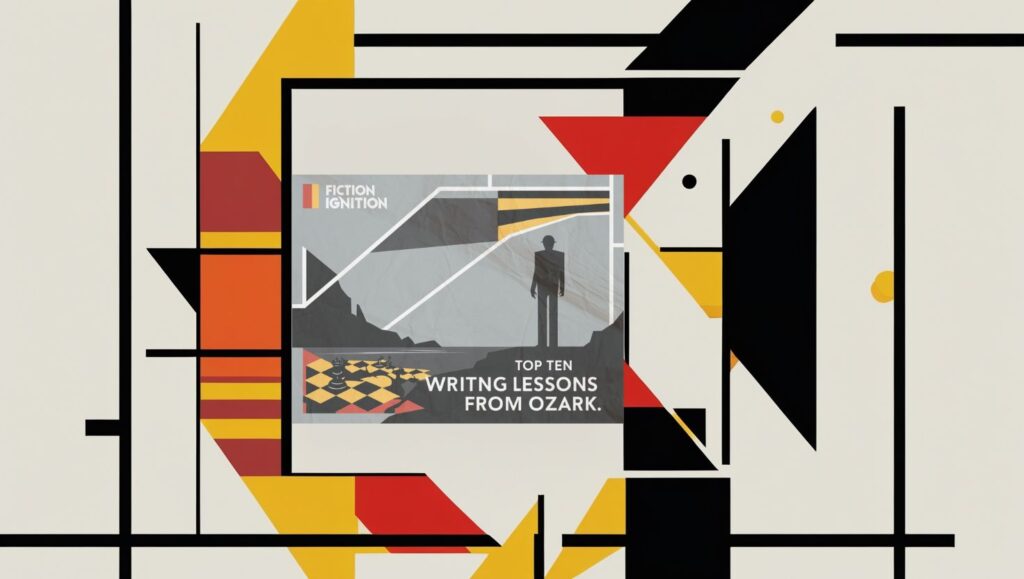Hello, Fiction Igniters! Have you ever watched a show so brilliantly written that it made you want to drop everything, pick up a pen, and craft your own masterpiece? That’s what Mad Men did for me. This isn’t just a TV series about advertising—it’s a storytelling masterclass, a crash course in character arcs, subtext, and emotional stakes. So, pour yourself an Old Fashioned, grab your notebook, and let’s dive into the top 10 lessons I learned about writing from Mad Men. (And yes, we’re counting down from 10 because anticipation is everything!)
10. Start With the Hook
Don Draper doesn’t just sell products; he sells stories. Remember his iconic pitch for the Kodak Carousel? It wasn’t about a slideshow projector; it was about nostalgia—”a twinge in your heart far more powerful than memory alone.” The same goes for writing. Your opening line is your hook, your Kodak moment. It’s got to grab the reader by the feels.
Example: Consider the opening of George Orwell’s 1984: “It was a bright cold day in April, and the clocks were striking thirteen.” One line, and you’re already intrigued. Why thirteen? Boom. You’re hooked.
9. Make It Personal
Every pitch in Mad Men connects to something deeply human. That’s why Peggy Olson’s Burger Chef pitch hits so hard—it’s not about burgers, it’s about family. Your writing should do the same. Make your readers feel something. Tug on those heartstrings.
Personal Anecdote: When I first started writing, I thought good stories had to be “epic.” But one of my most impactful pieces was a short story inspired by my mom’s childhood in Veracruz. Readers told me they cried—not because it was grand, but because it was real.
8. Subtext Is Your Best Friend
In Mad Men, what’s unsaid is often more important than what’s said. Think of Don’s interactions with his many women; the subtext is sizzling. In writing, subtext can turn a bland scene into a masterpiece.
Example: In Hemingway’s Hills Like White Elephants, the characters talk about everything but the real issue (an abortion). The tension’s in what they don’t say. That’s the power of subtext.
7. Flawed Characters Are Compelling
Don Draper is a mess—a liar, a cheater, and a genius. You hate him, you love him, and you can’t stop watching him. Perfect characters are boring. Flaws are what make your characters human.
Example: Consider Lisbeth Salander from The Girl with the Dragon Tattoo. She’s prickly, antisocial, and morally ambiguous. But that’s exactly why we’re obsessed with her.
6. The Devil’s in the Details
From the cigarette smoke to the jingles, Mad Men nails its 1960s setting. It’s immersive because it gets the details right. As a writer, your job is to transport your readers.
Example: J.K. Rowling didn’t just create Hogwarts; she built an entire world. Chocolate Frogs, Quidditch, Diagon Alley—those details make her universe unforgettable.
5. Conflict Drives the Story
Every episode of Mad Men is dripping with conflict: personal, professional, societal. Conflict keeps the plot moving and the audience glued.
Example: In Pride and Prejudice, Elizabeth and Darcy’s romantic tension is electrifying. Their conflict (pride, prejudice… you get it) is the story.
4. Themes Are Your North Star
Mad Men isn’t just about advertising; it’s about identity, change, and the American Dream. Great stories have layers, and themes are what tie those layers together.
Example: In Steinbeck’s The Grapes of Wrath, the theme of survival underpins every chapter. It’s not just a story about a family; it’s a story about human resilience.
3. Silence Can Speak Volumes
Some of Mad Men’s best moments are silent. A lingering look, a loaded pause—these quiet beats let emotions simmer. Don’t be afraid of silence in your writing. Let your readers fill in the blanks.
Example: In Of Mice and Men, the silence before George pulls the trigger is devastating. No words are needed.
2. Endings Are Everything
Remember the final scene of Mad Men? Don Draper meditating on a cliff, then the iconic Coke ad. Ambiguous yet satisfying. Your story’s ending is what readers will remember, so make it count.
Example: The ending of The Great Gatsby lingers long after you’ve closed the book. “So we beat on, boats against the current…” Haunting perfection.
1. Sell the Story, Not the Idea
At its core, Mad Men is about storytelling. Don doesn’t sell products; he sells emotions, aspirations, dreams. As writers, that’s our job too. We don’t just tell stories; we sell an experience.
Example: Stephen King’s On Writing isn’t just about writing techniques; it’s about believing in your voice. King doesn’t just teach; he inspires.
Final Thoughts
So there you have it, my fiery Fiction Igniters. Writing, like advertising, is about connection. It’s about understanding your audience, crafting a message that resonates, and delivering it with style. If Mad Men taught me anything, it’s that every story—yours included—has the power to light a fire in someone’s soul. So, go write something worth pitching.
And remember, until next time: don’t write, ignite!









